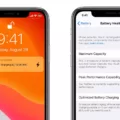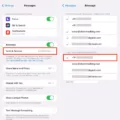One common issue that Mac users may encounter is when their Photo Stream does not work properly on their device. Photo Stream, a feature provided by Apple, allows users to automatically sync their photos and videos across their Apple devices, including iPhone, iPad, and Mac. However, if you’re experiencing difficulties with Photo Stream on your Mac, there are several potential reasons and solutions to consider.
First and foremost, ensure that your Mac has an active internet connection. Photo Stream relies on an internet connection to sync photos and videos between devices. Check your network settings and verify that you are connected to a stable and reliable Wi-Fi network.
Next, check if you have enabled iCloud Photos in the Photos app on your Mac. If you have turned on iCloud Photos, it’s important to note that photos from other devices using My Photo Stream may not appear on your Mac. To check this setting, open the Photos app on your Mac, go to the Albums tab, and look for the My Photo Stream album. If My Photo Stream is not visible, it’s likely that iCloud Photos is enabled, and you’ll need to access your photos through iCloud instead.
If you’re using iCloud Photos and want to access your photos on your Mac, you can do so by opening the Photos app, and selecting the iCloud tab. From there, you should be able to view and manage your iCloud photos and videos.
If you’re not using iCloud Photos and your My Photo Stream album is still not visible, you can try a few troubleshooting steps. First, ensure that your Mac’s operating system is up to date. Apple frequently releases software updates that include bug fixes and enhancements, so keeping your Mac’s software current can help resolve any potential issues.
Another troubleshooting step is to sign out of your iCloud account on your Mac and then sign back in. To do this, go to the Apple menu, select System Preferences, click on iCloud, and then click on Sign Out. After signing out, restart your Mac and sign back in to your iCloud account. This can refresh the connection and potentially resolve any syncing issues with Photo Stream.
In some cases, resetting your Mac’s Location & Privacy settings can also help resolve issues with Photo Stream. To do this, go to the Apple menu, select System Preferences, click on Security & Privacy, and then click on the Privacy tab. From there, select Location Services and click on the lock icon to make changes. Enter your administrator password, and then click on the Reset Location & Privacy button. Restart your Mac and check if Photo Stream is working properly.
If none of these troubleshooting steps resolve the issue, it may be helpful to contact Apple Support for further assistance. They can provide additional guidance and help troubleshoot any underlying issues that may be affecting your Photo Stream on your Mac.
If you’re experiencing difficulties with Photo Stream on your Mac, there are several potential reasons and solutions to consider. Ensure that your Mac has an active internet connection, check your iCloud Photos settings, update your Mac’s operating system, sign out and sign back in to your iCloud account, reset your Location & Privacy settings, and contact Apple Support if needed. By following these steps, you should be able to resolve any issues with Photo Stream and enjoy seamless syncing of your photos and videos across your Apple devices.

Why is Photo Stream Not Working On Your Mac?
If you are experiencing an issue with Photo Stream not working on your Mac, there could be a few reasons behind it. Here are some possible causes and solutions:
1. Internet connection: Ensure that your Mac is connected to the internet. Photo Stream requires an active internet connection to sync photos across devices. Check if you can browse the internet or access other online services to confirm your internet connectivity.
2. iCloud Photos enabled: If you have enabled iCloud Photos on your Mac, it might be the reason why Photo Stream is not working. With iCloud Photos enabled, photos from other devices using My Photo Stream won’t appear on your Mac. To check if iCloud Photos is enabled, open the Photos app on your Mac, go to Preferences, and click on the iCloud tab. If iCloud Photos is turned on, My Photo Stream photos will not be visible.
3. My Photo Stream settings: Check if My Photo Stream is enabled on your Mac. To do this, open the Photos app, go to Preferences, and click on the iCloud tab. Make sure the box next to My Photo Stream is checked. If it was already enabled, try toggling it off and on again to refresh the sync.
4. Photo Stream limitations: Keep in mind that My Photo Stream has some limitations. It only syncs the most recent 30 days or 1,000 photos, whichever is greater. If you have more than 1,000 photos or photos older than 30 days, they won’t be available in My Photo Stream. Additionally, only JPEG, TIFF, PNG, and most RAW file formats are supported by My Photo Stream. If you have photos in unsupported formats, they won’t sync via Photo Stream.
5. Software updates: Ensure that your Mac’s operating system and Photos app are up to date. Sometimes, issues with Photo Stream can be resolved by installing the latest software updates that include bug fixes and improvements.
If none of these solutions work, you may need to troubleshoot further or contact Apple Support for assistance.
Why Don’t All Your Photos Transfer From iPhone to Mac?
There could be several reasons why all your photos are not transferring from your iPhone to your Mac. Here are some possible causes:
1. Insufficient storage: If your Mac does not have enough storage space, it may not be able to accommodate all the photos from your iPhone. Check the available storage on your Mac and free up some space if needed.
2. Connection issues: Make sure that your iPhone and Mac are properly connected. Use a reliable USB cable and ensure that it is securely plugged into both devices. Additionally, check if your iPhone is unlocked and trust your Mac when prompted.
3. Outdated software: Ensure that both your iPhone and Mac are running on the latest software versions. Outdated software can sometimes cause compatibility issues and prevent the transfer of photos.
4. Incorrect settings: Check the settings on your iPhone and Mac to ensure that they are configured correctly for photo transfer. On your iPhone, go to Settings > Photos and enable “My Photo Stream” and “Upload to My Photo Stream.” On your Mac, open the Photos app and go to Preferences > iCloud and make sure “My Photo Stream” is checked.
5. iCloud Photo Library: If you have enabled iCloud Photo Library on your iPhone, it may be syncing your photos across devices rather than transferring them directly to your Mac. In this case, you can access your photos on your Mac through the Photos app or iCloud.com.
6. Photo format compatibility: Some photo formats may not be compatible with your Mac. Ensure that the photos you are trying to transfer are in a format supported by your Mac, such as JPEG or PNG.
7. Unresponsive software: If the Photos app on your Mac is not responding or crashing, it may hinder the photo transfer process. Try restarting the app or your Mac to see if it resolves the issue.
If none of these solutions work, you may consider seeking further assistance from Apple Support or consulting an expert technician.
Conclusion
Mac provides a seamless and efficient photo management experience for users across all their devices. With features like iCloud Photos and My Photo Stream, users can easily sync and access their photos and videos on their iPhone, iPad, and Mac. However, it’s important to ensure that there is an active internet connection and that iCloud Photos is enabled in the Photos app to fully utilize these features. Additionally, if you encounter any issues with transferring photos from your iPhone to your Mac, resetting the Location & Privacy settings on your iPhone may help resolve the problem. Mac’s commitment to providing a user-friendly and integrated photo management system makes it a reliable choice for users looking to organize and access their photos effortlessly.








